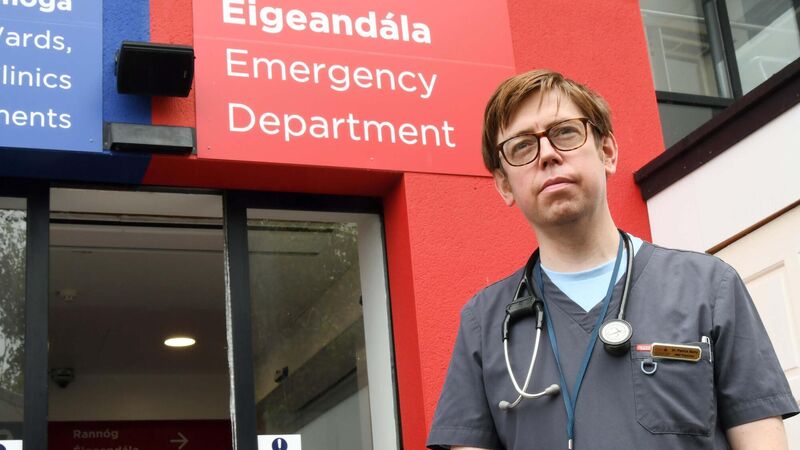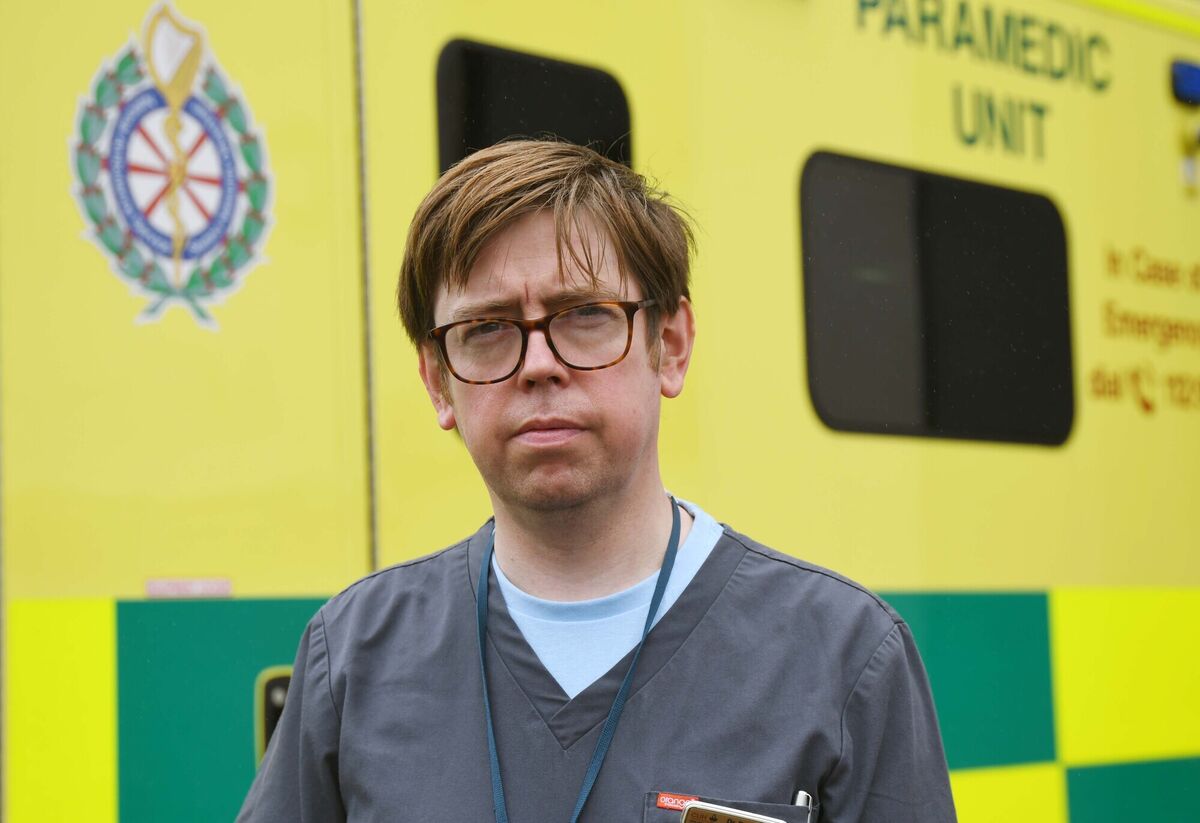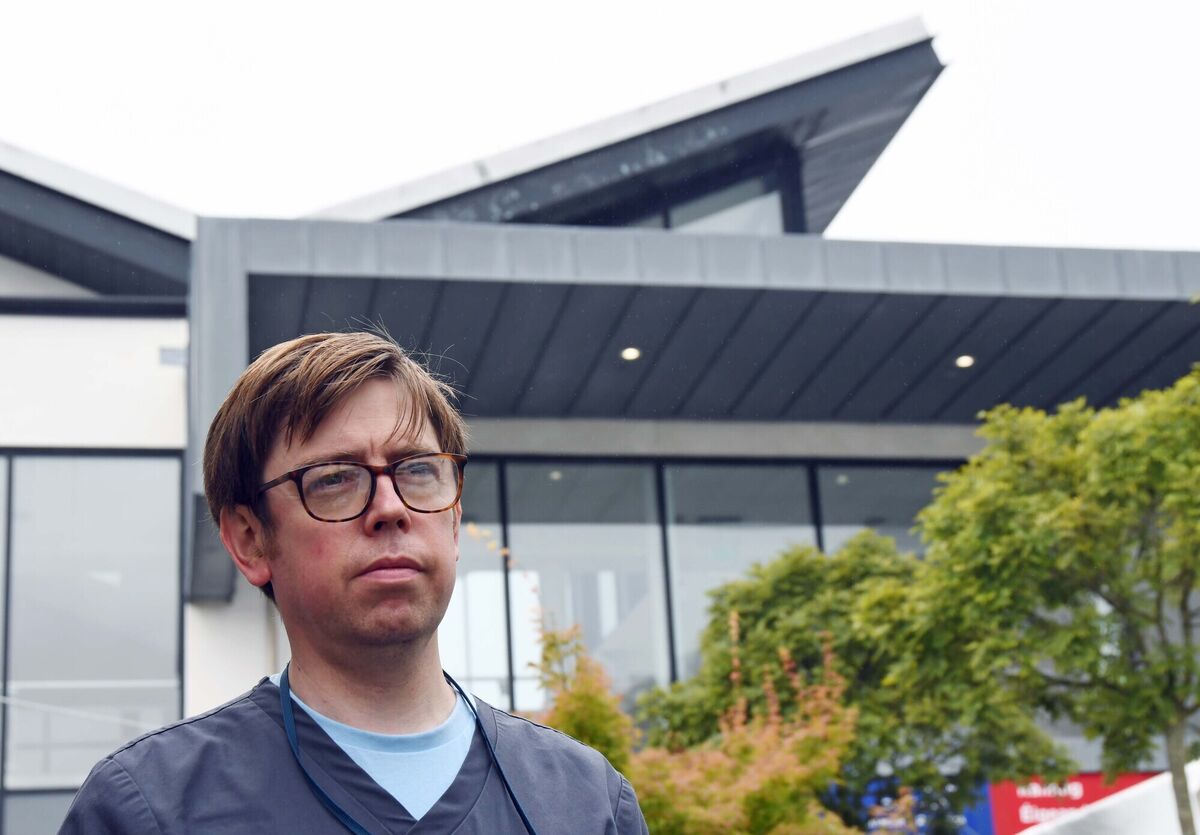Rapid response to TIAs: Saving time saves lives

Dr Pat Barry, CUH consultant in acute medicine, says the risk of stroke after a TIA is highest in the first two weeks. Picture: Denis Minihane
A transient ischemic attack (TIA) can come and go in a short period of time, but it is often a major warning sign that needs to be acted on quickly. This is where the one-stop TIA ambulatory care clinic at Cork University Hospital can have a significant impact.
The clinic was established by Dr Pat Barry, a consultant in acute medicine, and neurologist Dr Simon Cronin in 2013. It is a consultant-provided rapid access service which operates on a referral basis, mainly from GPs but also from the emergency and eye casualty departments at CUH.
The cost of ignoring such symptoms can be high, he adds. “The risk of stroke after a TIA is highest in the first two weeks — you need to be seeing these people quickly even they are not strokes.
"High-risk features, like weakness, the symptoms lasting longer or the presence of things like hypertension or diabetes, or being older, means the risk [of a stroke] can be as high as 18% within the next week.”

The TIA clinic operates from Monday to Friday and mild to moderate risk referrals are usually seen within a day or two. However, a high proportion of the cases the clinic sees won’t be actual TIAs.
“The difficulty in TIA clinics is that for every three people we see, one will be a TIA and two will be a mimic of a TIA. We have to see lots of people to find the true TIAs but we would expect that,” says Barry.
For example, the symptoms of a TIA can often overlap with those of migraine with aura, whose sufferers experience similar neurological disturbances.
“At least a third of what we see is migraine and then we’ll see seizures, low blood pressure issues or vertigo from infection….if we look at the list of things that present to TIA clinics, we see lots of what we might describe as transient neurological events. Migraine aura is a very typical one. Sometimes we probably see more migraine aura than true TIAs.”
Distinguishing migraine with aura from TIAs is something the staff in the clinic are well used to, says Barry. Other consultants working at the clinic are co-founder Dr Simon Cronin, Dr Liam Healy, and Dr Áine Merwick.
“Clinically, people who are experienced and see this a lot will be able to differentiate between the symptoms of a TIA or stroke and migraine. There is a saying that ‘a stroke is a thief and a migraine is a magician’.…
While the ultimate aim of the TIA clinic is to identify and treat people with high-risk conditions such as carotid disease, atrial fibrillation or hypertension, Barry says referral can also benefit people who may be presenting with other less serious medical issues.
“We meet a lot of worried people who, because they have been sent to the TIA clinic, assume they have had a TIA. The first thing I would normally say to them is that most people I meet haven’t had a TIA. Sometimes we meet people with very frequent migraine and they have been miserable and suffering and not aware that there is stuff they can do.
"They will meet with me or a neurologist and we can put a management plan in place. We can signpost people to other services as well, for example, we can divert an older person with low blood pressure causing symptoms, to a fall service.”

Similar to stroke, Barry emphasises that it is always better to be safe than sorry when it comes to acting on possible TIAs, which are actually more rare than stroke.
“TIA isn’t as common as stroke. For every one TIA, a GP will probably see two or three strokes each year. Some GPs won’t see a true TIA in a year. We would always say that if they are unsure, they should refer up to us.”
Barry says the one-stop nature of the TIA clinic has been of significant value in terms of cutting down on unnecessary admissions and investigations, which benefits hospital services and patients alike.
“If you looked at what was happening before this clinic was established, patients were admitted for an average of about four days if they had a TIA, whether it was a low or a high-risk one.
"When non-specialists investigate things like TIA, they tend to over-investigate. We rationalised the use of diagnostic tests. Everybody coming through [the clinic] will have a scan of their carotid arteries, that is about the highest risk condition we are looking for.
"They will have their simple blood test, an ECG, most people will have brain imaging done, that is usually in the form of an MRI. We would have developed pathways with the MRI and radiology departments here, who have been very supportive.”
Barry says studies show ambulatory TIA services can significantly reduce incidence of stroke.
“We have good enough study evidence internationally that your stroke rate can drop off fairly significantly if you are referred to a service like this.”

Celebrating 25 years of health and wellbeing








